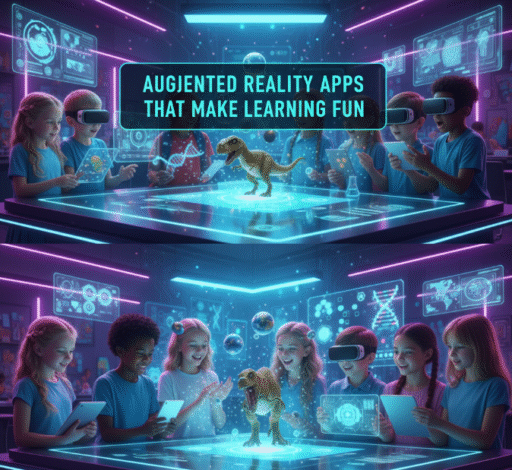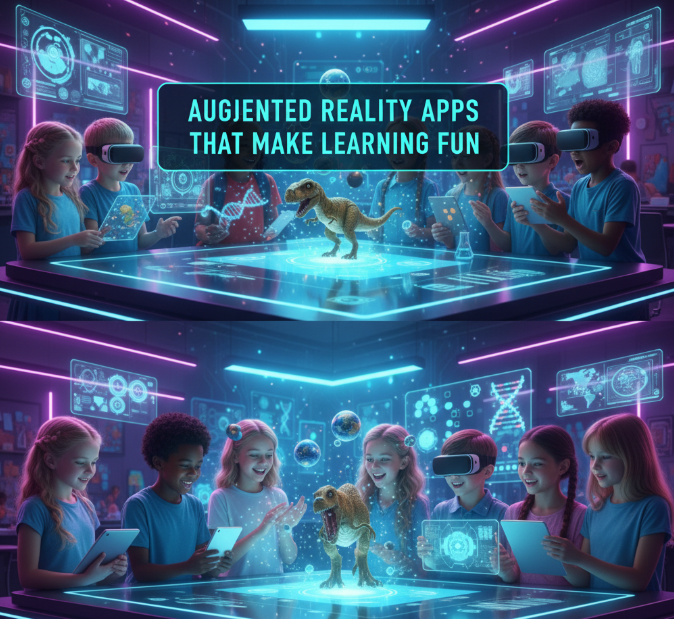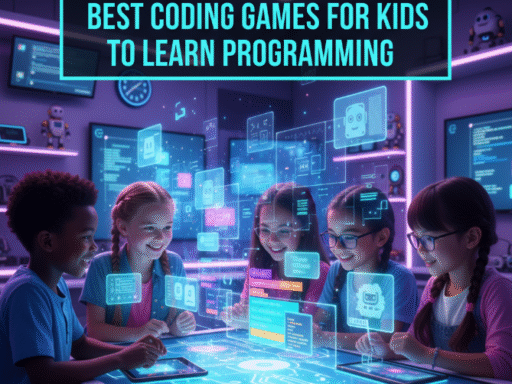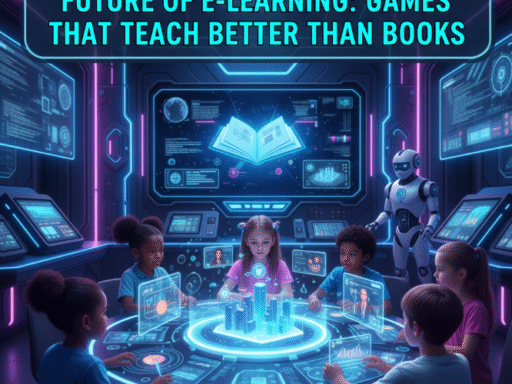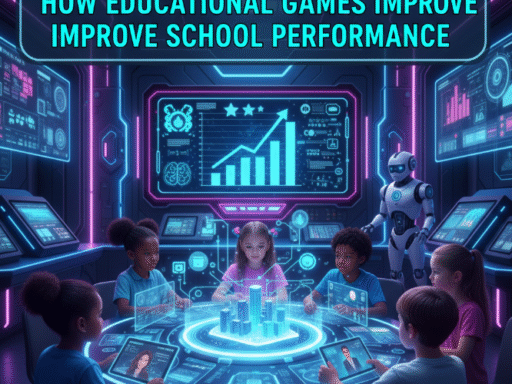Introduction: The New Face of Learning
Imagine opening a book about the solar system and suddenly seeing planets spinning in front of you through your phone screen. Or pointing your tablet at a picture of a frog and watching its 3D body parts come alive. This isn’t science fiction—it’s Augmented Reality (AR) in education.
Augmented Reality blends digital objects with the real world, giving learners a chance to interact with lessons in exciting new ways. Instead of memorizing plain text, students get to see, touch, and experience concepts through apps designed to make learning fun.
In this article, we’ll explore some of the best augmented reality apps for education, how they make learning enjoyable, and why they are becoming a must-have for students, teachers, and even parents.
What Makes Augmented Reality Learning Special?
Before diving into the apps, let’s look at what sets AR apart from traditional teaching:
-
Interactive Engagement – Instead of just reading or listening, students can interact with digital objects in real space.
-
Visualization of Complex Ideas – Subjects like biology, chemistry, or astronomy become easier when you can see them in 3D.
-
Boosts Curiosity and Motivation – AR turns boring topics into fun explorations.
-
Personalized Learning – Learners can explore at their own pace, making education less stressful and more enjoyable.
📊 Quick Stat: According to research, AR in education increases student engagement by nearly 70% compared to traditional teaching methods.
Top Augmented Reality Apps That Make Learning Fun
Here’s a handpicked list of AR apps across subjects that make education playful and exciting.
1. QuiverVision (Quiver) – Coloring That Comes Alive
-
Best For: Younger students (ages 5–12)
-
Subjects: Art, Science, Creativity
With Quiver, kids can color worksheets as usual. But when they scan them with the app, their drawings come alive in 3D. For example, a butterfly starts flapping its wings or a volcano begins erupting.
Why It’s Fun:
-
Kids see their artwork moving in real-time.
-
It combines creativity with science (e.g., life cycles, geography).
-
Parents love it as a screen-time activity with educational value.
2. Google Expeditions (Now Part of Google Arts & Culture)
-
Best For: Middle and high school students
-
Subjects: History, Geography, Science
This app takes learners on virtual field trips. Imagine walking inside the Great Wall of China, exploring coral reefs, or even traveling to outer space—all without leaving your classroom.
Cool Features:
-
3D tours of historical monuments.
-
Science journeys into the human body or the solar system.
-
Teacher-led group experiences for classrooms.
3. Merge Cube + Merge EDU
-
Best For: All ages, especially STEM learners
-
Subjects: Science, Engineering, Math
The Merge Cube is a foam cube that, when paired with the Merge EDU app, turns into a holographic object you can hold. Students can explore a beating human heart, a dinosaur fossil, or even build molecules in the palm of their hands.
Benefits for Learning:
-
Hands-on exploration of 3D models.
-
Great for visual and kinesthetic learners.
-
Helps schools teach STEM in fun, affordable ways.
4. Arloon Plants
-
Best For: Middle school students
-
Subjects: Biology, Environmental Science
This AR app lets students explore the parts of a plant in detail. By pointing their device at a marker, they can rotate and dissect plants in 3D.
Why Kids Love It:
-
Interactive quizzes keep learning exciting.
-
Shows plant growth and life cycles in real-time.
-
Teachers use it for science experiments without lab setups.
5. SkyView
-
Best For: All ages (great for astronomy lovers)
-
Subjects: Astronomy, Physics
Point your phone at the night sky, and SkyView identifies stars, planets, and constellations.
Fun Features:
-
Real-time star mapping.
-
Augmented reality telescope view.
-
Connects myths and history with constellations.
🌌 Example: Instead of just reading about Orion’s Belt, students can spot it directly in the sky.
6. Mondly AR – Language Learning Made Visual
-
Best For: Middle school, high school, and adult learners
-
Subjects: Languages
Mondly AR introduces learners to a virtual language teacher. This teacher interacts with you in AR, helping you learn vocabulary and grammar in 3D scenarios.
Why It’s Effective:
-
Real-world simulations (like shopping, travel, or restaurants).
-
Voice recognition helps practice pronunciation.
-
Builds confidence through interactive conversations.
7. JigSpace
-
Best For: Older students and curious learners
-
Subjects: Science, Technology, Engineering
JigSpace provides step-by-step 3D “jigs” (interactive lessons) that explain how things work. Want to see how a car engine runs? Or how a lock opens? JigSpace breaks it down with interactive AR models.
Learning Perks:
-
Encourages problem-solving and mechanical thinking.
-
Supports STEM learning with real-world applications.
-
Great for curious minds who love “how it works” explanations.
8. Human Anatomy Atlas AR
-
Best For: High school and college students
-
Subjects: Biology, Health Science
This app gives learners a 3D look at the entire human body. Students can rotate, zoom, and explore bones, muscles, and organs.
Key Highlights:
-
Medical accuracy.
-
Helps students understand complex anatomy.
-
Makes biology lessons much more engaging than textbook diagrams.
9. Arloon Geometry
-
Best For: Math learners
-
Subjects: Geometry
Math isn’t always fun, but Arloon Geometry turns 2D shapes into 3D objects. Students can manipulate prisms, pyramids, and spheres to see how they work.
Why It’s Useful:
-
Builds spatial thinking skills.
-
Helps visual learners master geometry concepts.
-
Makes math less abstract and more practical.
10. CoSpaces Edu
-
Best For: Middle and high school students
-
Subjects: Coding, Creativity, Cross-curricular learning
This app lets students create their own AR experiences. They can build 3D worlds, add animations, and even code interactions.
What’s Exciting:
-
Encourages creativity and storytelling.
-
Teaches coding and problem-solving.
-
Students can share their projects with others.
Table: Best AR Apps by Subject
| Subject Area | Recommended AR Apps | Age Group | Key Benefits |
|---|---|---|---|
| Science (Biology) | Human Anatomy Atlas, Arloon Plants | 12+ | Visualize anatomy & plant growth |
| Astronomy | SkyView, Google Expeditions | All ages | Explore stars & space |
| Math | Arloon Geometry, JigSpace | 10+ | Makes abstract concepts visual |
| Art & Creativity | Quiver, CoSpaces Edu | 5+ | Boosts imagination & design |
| Language Learning | Mondly AR | 12+ | Practice real-life conversations |
| Engineering/Tech | Merge EDU, JigSpace | 10+ | Hands-on exploration of models |
How AR Apps Benefit Students and Teachers
📘 For Students
-
Makes tough subjects easier to understand.
-
Increases motivation and curiosity.
-
Builds stronger memory through interactive learning.
🍎 For Teachers
-
Helps explain complex topics quickly.
-
Increases classroom participation.
-
Saves time by replacing heavy setups (like lab experiments).
👨👩👧 For Parents
-
Turns screen time into learning time.
-
Encourages kids to study independently.
-
Bridges the gap between fun and education.

Augmented Reality Apps That Make Learning Fun
Challenges of AR in Education (And How to Overcome Them)
While AR is exciting, it comes with some challenges:
-
Device Limitations – Not all schools can afford tablets or smartphones for every student.
-
Internet Requirements – Many AR apps need fast Wi-Fi to work smoothly.
-
Distraction Factor – If not monitored, students may get lost in “fun” rather than focusing on learning.
Solutions:
-
Schools can introduce AR in shared classroom settings.
-
Offline versions of AR apps should be used where internet access is limited.
-
Teachers should balance AR with traditional teaching methods.
Future of Augmented Reality in Learning
The future looks bright for AR in education. Experts predict:
-
More Affordable Devices – AR glasses and cheaper tools will make it more accessible.
-
Gamified Classrooms – Entire subjects will be taught through AR-based games.
-
Global Virtual Trips – Students will experience real-time AR tours of museums, labs, and historical sites worldwide.
In short, AR is set to transform how we learn by making classrooms more immersive, engaging, and fun.
Conclusion: Turning Learning Into an Adventure
Education no longer needs to feel boring or stressful. With augmented reality apps, students can hold a beating heart, explore planets, or even create their own 3D worlds. These apps make learning interactive, exciting, and memorable.
Whether you’re a student struggling with math, a teacher looking for fresh ideas, or a parent searching for meaningful screen time, AR apps can open a world where learning feels like play.
So, the next time you pick up your phone or tablet, remember—it’s not just a device for entertainment. With the right AR apps, it can be your window to a whole new way of learning.
